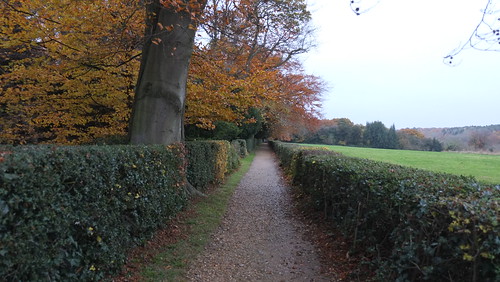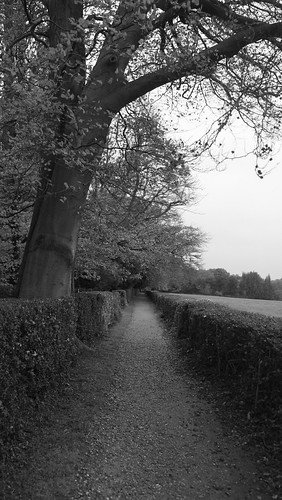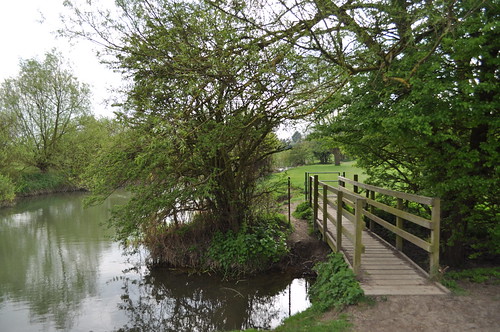I’ve long been interested in the relationship between walking and creative thinking.
I devoted a chapter of The Distraction Addiction to walking and restorative activities, particularly Charles Darwin’s habit of walking on the Sandwalk, a path that he had built on the edge of his property and rather tellingly called his “thinking path.”
My main interest has been in how walking illustrates ideas about embodied cognition, and how exposure to restorative environments can combat brain fatigue.
Now, Stanford Ph.D. Marily Oppezzo and education professor Daniel Schwartz have a new study that teases out the relative importance of the physical act of walking, versus walking somewhere restorative.

my favorite place to walk: cambridge
Oppezzo and Schwartz had two groups walk outdoors or walk on treadmills, and a second group sit at desks or get wheeled around camps.
They then gave everyone a divergent thinking test (a standard measure of creative ability).
What they found was that
walking indoors or outdoors similarly boosted creative inspiration. The act of walking itself, and not the environment, was the main factor. [ed: my emphasis] Across the board, creativity levels were consistently and significantly higher for those walking compared to those sitting….
A person walking indoors – on a treadmill in a room facing a blank wall – or walking outdoors in the fresh air produced twice as many creative responses compared to a person sitting down, one of the experiments found.
“I thought walking outside would blow everything out of the water, but walking on a treadmill in a small, boring room still had strong results, which surprised me,” Oppezzo said.
The study also found that creative juices continued to flow even when a person sat back down shortly after a walk.
However, they also tested performance on divergent and convergent thinking tests, and found something very interesting.
While the study showed that walking benefited creative brainstorming, it did not have a positive effect on the kind of focused thinking required for single, correct answers….
Researchers gave participants a word-association task, commonly used to measure insight and focused thinking. Given three words, participants had to generate the one word that could be used with all three to form compound words. For instance, given the words “cottage, Swiss and cake,” the correct answer is “cheese.”
In this test, those who responded while walking performed mildly worse than those who responded while sitting, according to the study.
Productive creativity involves a series of steps – from idea generation to execution – and the research, Oppezzo said, demonstrated that the benefits of walking applied to the “divergent” element of creative thinking, but not to the more “convergent” or focused thinking characteristic of insight.
This doesn’t mean you shouldn’t get out; but it does suggest that when you’re doing work that requires creative thinking, there’s value in any walking.
Here, for the record, is the abstract from the article, published in in the April 2014 Journal of Experimental Psychology: Learning, Memory, and Cognition:
Four experiments demonstrate that walking boosts creative ideation in real time and shortly after. In Experiment 1, while seated and then when walking on a treadmill, adults completed Guilford’s alternate uses (GAU) test of creative divergent thinking and the compound remote associates (CRA) test of convergent thinking. Walking increased 81% of participants’ creativity on the GAU, but only increased 23% of participants’ scores for the CRA. In Experiment 2, participants completed the GAU when seated and then walking, when walking and then seated, or when seated twice. Again, walking led to higher GAU scores. Moreover, when seated after walking, participants exhibited a residual creative boost. Experiment 3 generalized the prior effects to outdoor walking. Experiment 4 tested the effect of walking on creative analogy generation. Participants sat inside, walked on a treadmill inside, walked outside, or were rolled outside in a wheelchair. Walking outside produced the most novel and highest quality analogies. The effects of outdoor stimulation and walking were separable. Walking opens up the free flow of ideas, and it is a simple and robust solution to the goals of increasing creativity and increasing physical activity.




